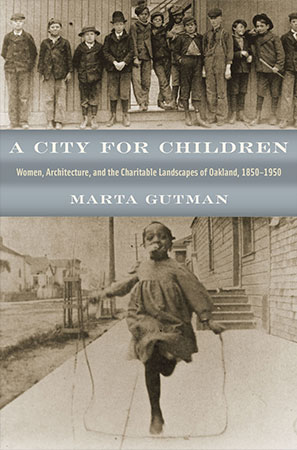Publications

A City for Children
Women, Architecture, and the Charitable Landscapes of Oakland, 1850-1950
Marta Gutman
Physical spaces offer a unique and useful tool to grasp childhood as an ideal imagined by adults, as an arena shaped by social relationships, and as an experience of children. Since space is where childhood is lived, the material world offers a treasure trove of historical evidence of how children use, interpret, shape, and imagine their everyday lives. Physical spaces, as the architectural historian Abigail A. Van Slyck insists, allow us to grasp “the experience of being young.”[1] Objects and spaces are also useful for studying the cultural exchanges that shaped women’s decision making in California, and for assessing results, including whether or not adults use space to achieve ethically adequate objectives for children and their childhoods.

